There is a quiet sensibility in the painter James Kao. Upon initial observation of his drawings and paintings one may recall artistic concerns and practices employed during the early 20th c. However, through deeper inspection one finds an investigative practice that questions the present. This can be seen in his attentive approach and use of materials. This week the COMP Magazine visited Kao in his Hyde Park studio to discuss his subtle aesthetic practice, the manner he thinks about and works upon 2-dimensional space, his efforts with 4th Ward Project Space, and how all of these items are translated and shared with onlooker and his students.
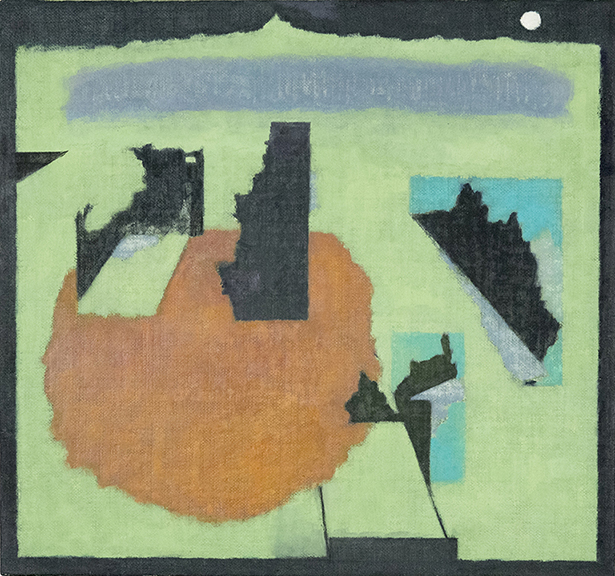
James Kao, Ruins, 2017, 14 x 15 inches, oil on linen over board
One could say you’re fairly well traveled due to the diverse locals you have lived in. You grew up in Houston, studied philosophy at the University of Chicago, moved to L.A., returned to Chicago to study painting at SAIC, and now appear to have planted roots? Can you identify any specific early events that inform this weaving life trajectory and your present aesthetic pursuits?
Houston is a place where I learned to catch frogs, turtles, and snakes. I kept my first aquarium in Houston. The Houston Zoo once gave out seedling pine trees, and I planted two in front of our home. I jumped over these trees every day until they grew too tall. When I left Houston for college, I left behind this relationship to the natural world along with my childhood. More than a decade later, I was able to spend a summer in New Hampshire. There, the forests were large, imposing, and wild. I rekindled my curiosity of the natural world, and I also developed a new respect and awe. I had never felt so small as when I was walking alone in the middle of the White Mountain National Forest, and my work has not been the same since.
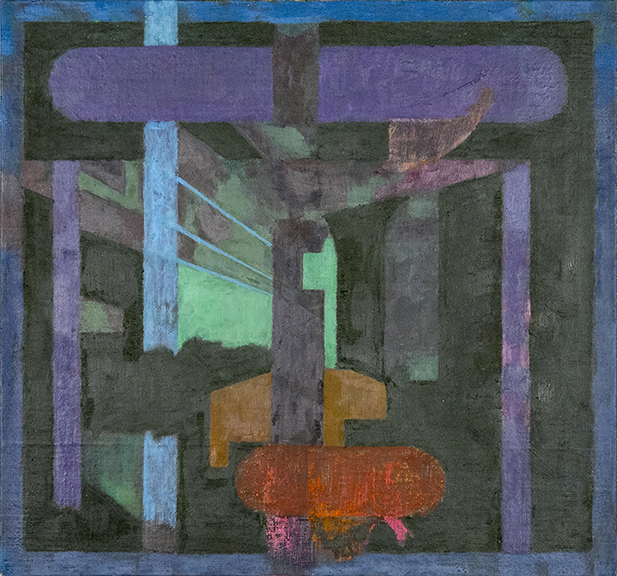
James Kao, Crossing Before, 2017, 14 x 15 inches, oil on linen over board
When I look at your painting I sense an affinity with early modernist painters like Piet Mondrian’s Dutch landscapes, Georges Braques’ still-lifes, and Robert Delaunay’s Orphisms? This is due to how I see you simplifying form and space, apply paint, and investigate color. Do you sense this connection? How does your practice differ beyond the period in which it was produced?
In art school, I was awed by how teachers and classmates could see and articulate how a painting unfolded into the visual world. I learned how formal elements can appear, operate, and fade out in a painting. I love the order and positivistic sensibilities that many modernist works evoke, and I have worked to infuse these ideas into my own practice.
It can be quite easy for me to talk about works of art in terms of historical movements or periods; it’s quite different and very difficult for me to talk about my own work in such terms, however . . . It would be a very big shift in my practice to not consider the kinds of materials I use: pigment rich oil colors, rabbit skin glue-based gesso, linen, or even hog bristle brushes. One day I may understand the rectangle enough (or give up, or lose interest) and make paintings in a different format. Many of my artist contemporaries have interests in other materials and may give little thought to the rectangle.
I’d like to think that any person who comes upon one of my works might find an idea, reference, or sensation that resonates. At moments, I feel the only way to maintain this idealistic and universalistic sensibility is to retreat.
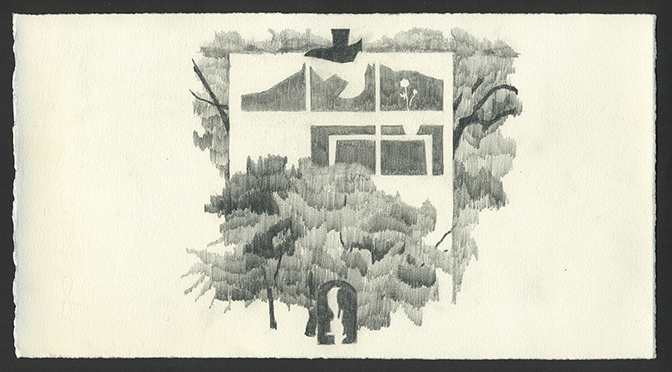
James Kao, Untitled, 2017, 6.75 x 13 inches, pencil on paper
In addition to your aesthetic practice you run 4th Ward with Mika Horibuchi and SaraNoa Mark. What is the intent in this effort? What upcoming at 4th Ward?
We were given a remarkable opportunity to build and maintain an exhibition space. This is, in itself, an enjoyable project, but in a small way it is also a kind of responsible participation in the art world, i.e. we can do this to support artists, and we ought to. There are many more artists in Chicago than there are exhibition spaces, after all.
Moreover, I have always envisioned 4th Ward Project Space as a quiet, political opportunity. We are able to operate without commercial concerns; we want artists to present the work they choose, and we want artists to present work in a manner they choose, too.
Erin Washington has a suite of stunning paintings on view until May 26, and we are very excited about Huong Ngo’s exhibition scheduled for Fall 2018.
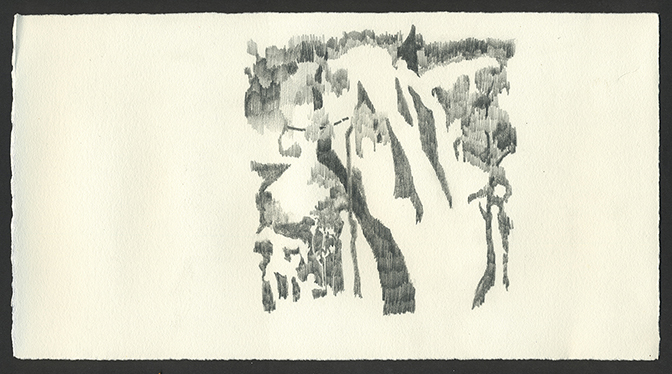
James Kao, Untitled, 2017, 6.75 x 13 inches, pencil on paper
Can you share with us your process? How do you identify a topic or identify what content and formal issues you want to address?
I have spent much time over recent years in woodlands and forests. My father, too, has been ill for many years. I never really let go of thinking about these things.
When I begin my works, I do so by putting down a shape I see in the world, and I continue to put down shapes until a new image appears. I know enough that the spaces between shapes can be activated in a way to conjure an image that looms more than one depicted directly. I don’t know exactly how specific images appear or how I see them appearing.
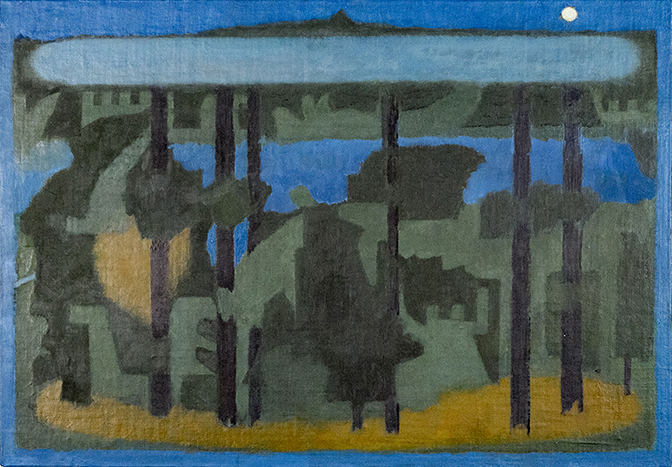
James Kao, Peristyle, 2017, 14 x 20 inches, oil on linen over board
What do you value most in your aesthetic practice?
Much of my practice is about making changes as I progress in a work. I enjoy making these changes, but I value the time looking at my work prior to these revisions the most. These are the moments where I start to understand what a particular drawing or painting may be trying to say, and these are the moments where I learn from all the accidents in my work.
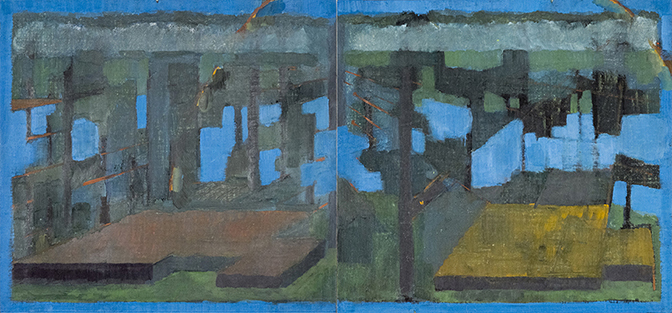
James Kao, Where lighting strikes, 2017, 14 x 30 inches (diptych), oil on linen over board
In addition to working as an artist you teach at Aurora University. Are there any specific items that you regularly share with your students? What do you see as your role as an educator?
I want my students to understand that there are lots of very good painters in the world, and I want my students to understand that not all of these very good painters are very good artists; I hope my students will know that they must always strive to develop their personal sense of subject matter. I hope, too, that my students will remember that intention and meaning are not always the same thing.
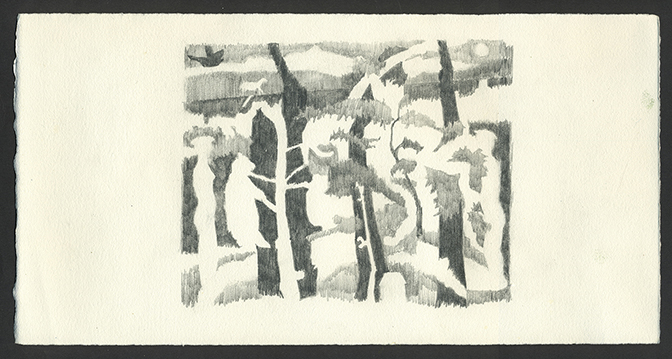
James Kao, Untitled, 2017, 6.75 x 13 inches, pencil on paper
What’s the plan for the remainder of 2018? Are there any specific works or series you hope to call closure to this year? Do you have any upcoming exhibitions?
There are two six foot paintings in my studio that I have been working on over the past few years, and I hope to finish them this summer. I am also preparing for a Fall exhibition of new paintings and drawings at boundary in Chicago, IL.
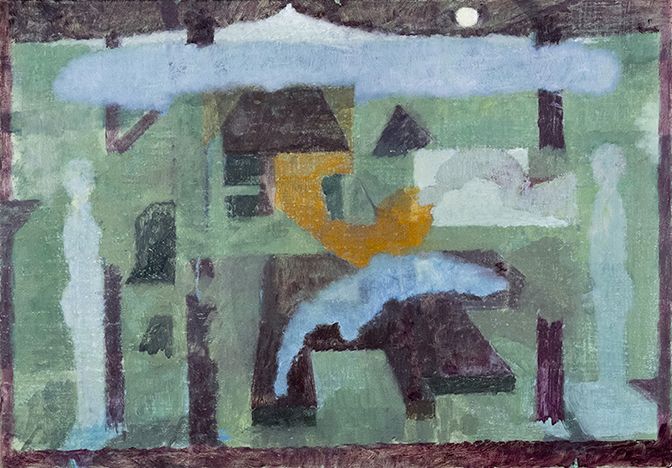
James Kao, Precipitate, 2017, 14 x 20 inches, oil on linen over board
For additional information on the practice of James Kao and 4th Ward Projects, please visit:
James Kao – http://www.jameskao.org/
Interview with Alice Haller – http://via.library.depaul.edu/cgi/viewcontent.cgi?article=1083&context=oral_his_series
At Length Magazine interview – http://atlengthmag.com/art/a-correspondence-with-james-kao/
4th Ward Project Space – http://www.4wps.org/
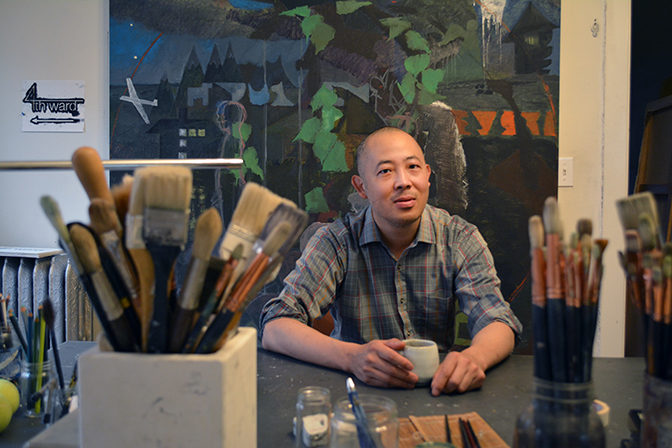
James Kao, painter, in his Hyde Park studio, Chicago, IL, 2018
Artist interview and portrait by Chester Alamo-Costello


